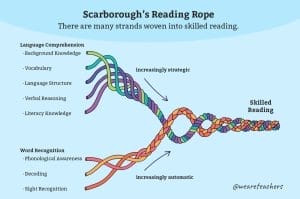A school library is more than a collection of books; it is the heart of inquiry, creativity, and student growth. While it’s tempting to give a book vendor a budget and let them “stock the shelves,” this approach often results in resources that may not align with your curriculum, pedagogical goals, or students’ needs. Systematic planning is essential to ensure every investment strengthens your learning environment.
Here’s a step-by-step guide for principals to lead a thoughtful, sustainable library transformation:
1️⃣ Start with a Realistic Budget Plan
- Identify your range: ₹5–10 lakh (or more, depending on school size).
- Spread the investment over 2 years for a measurable impact.
- Divide spending into phases: Infrastructure → Resources → Technology → Community Engagement.
- Avoid handing the entire budget to a vendor without guidance — it can lead to irrelevant or duplicate titles.
2️⃣ Reimagine the Library Vision
- Define the library’s purpose: fostering reading culture, inquiry skills, or digital literacy.
- Align the vision with your curriculum philosophy (CBSE, IB, or National boards).
- Consider a new identity: Library Media Centre / Learning Commons / iCommons.
3️⃣ Conduct a Collection Audit & Usage
- Review existing books: identify outdated or underused titles.
- Analyze student engagement patterns: who uses the library, when, and for what purpose.
- Assess space, furniture, and technology, and note gaps or redundancies.
4️⃣ Prioritize Upgrades Smartly
- Year 1: Improve physical space, signage, shelving, and key book acquisitions.
- Year 2: Introduce technology (cataloguing systems, eBooks, makerspaces).
- Recommended digital cataloguing platforms: Koha, Accessit, or any other.
- Avoid impulsive purchases based on sales or popularity — curated collections have lasting impact.
5️⃣ Build a Balanced Collection
- Include print and digital resources: fiction, nonfiction, periodicals, eBooks, reading programs or books that meet the needs of all learners.
- Ensure diversity: local and global authors, multiple perspectives.
- Align collections with SDGs, Approaches to Learning (ATL) skills, and units of inquiry.
- Systematic selection ensures relevance and supports long-term learning goals.
6️⃣ Invest in People, Not Just Products
- Hire or train a qualified librarian — the library’s key driver of transformation.
- Foster collaboration between teachers and the librarian to integrate resources into lessons.
- Build student involvement through library committees or reading clubs.
- Consider a long-term partnership with a school library consultant — their expertise ensures resources, layout, and programs are aligned with your school’s vision.
7️⃣ Create an Inviting, Functional Space
- Design flexible and comfortable areas — reading nooks, collaboration zones, makerspaces.
- Add visual cues: signage, genre labels, student work displays, and inspirational quotes.
- Transform the library into a “third space” — beyond classrooms and playgrounds.
8️⃣ Communicate, Celebrate, and Engage
- Share milestones with the school community via newsletters, social media, or assemblies.
- Celebrate achievements: “100 new books added,” “Reading Week,” author visits.
- Invite parents, alumni, and experts to actively participate — library culture thrives on engagement.
9️⃣ Review, Reflect, and Evolve
- Conduct annual reviews: which initiatives worked, and what needs improvement?
- Track book circulation, student engagement, and reading progress.
- Recognize that a library is a living ecosystem, evolving with students’ needs and pedagogical goals.
Giving a vendor a budget may fill your shelves quickly, but without systematic planning and expert guidance, those books may fail to serve your students’ learning needs. Invest strategically, plan thoughtfully, and consider a long-term partnership with a school library consultant — the return is a library that genuinely transforms learning, nurtures curiosity, and fosters lifelong readers.
| Avoid | Invest In |
|---|---|
| Handing the entire book budget to a vendor without guidance | Systematic, curriculum-aligned collection planning |
| Random book purchases based on popularity or sales | Curated books aligned with curriculum, SDGs, ATL skills, and inquiry units |
| Focusing only on physical books | Balanced mix of print, digital, and multimedia resources |
| One-time upgrades without long-term vision | Phased, multi-year plan for infrastructure, technology, and resources |
| Treating the library as a storage space | Creating a flexible, inviting, functional learning hub |
| Relying solely on existing staff with no training | Investing in a qualified librarian and teacher-librarian collaboration |
| Ignoring student engagement and feedback | Building student involvement through committees, clubs, and reading programs |
| Quick fixes without reflection | Annual review, tracking usage, and continuous evolution of library programs |
| Short-term perspective | Long-term partnership with a school library consultant for expert guidance |










